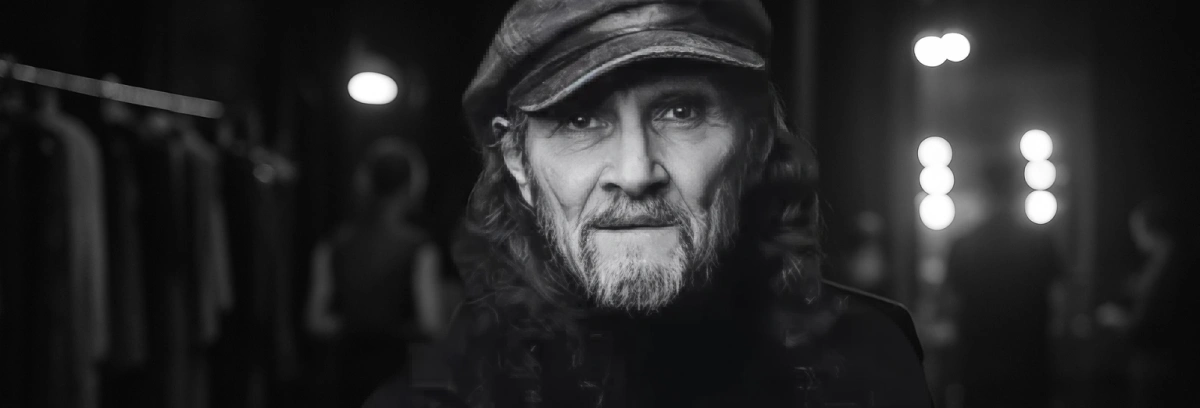How Do You Know if the Role is Right for You?
What is Casting Directors Looking For?
How Do Casting Directors Choose Actors?
- Headshots.
- How Often Should You Update Your Headshots?
- Do You Need a Professional Headshot to Get Started?
- Close-up Photos.
- Please Go 'No Filter' When Posting Your Headshot.
- The First Photo in Your Profile is the Most Important.
- Do Actors Need Full-body Shots?
- How Many Photos Do You Need for an Acting Portfolio?
- Actor's Experience.
- Can an Actor Play the Role?
How Do You Stand Out to a Casting Director?
How Not to Get Nervous During an Audition?
The casting industry is a buzzing and ever-growing field, presenting plenty of possibilities for aspiring talent worldwide. In recent years, it has become increasingly competitive, which makes it crucial for actors to find ways to stand out from the crowd.
Have you ever wondered how casting directors choose actors? We spoke to Richard N. Wilson, a producer and casting director with wide experience casting talent for his films.
How Do You Know if the Role is Right for You?
Despite millions of people pursuing their dreams and trying their luck applying for acting jobs, finding the right talent for the role isn’t always an easy feat.
1. Role Type.
First and foremost, it is important to take the role type into account. There are lead roles, as well as roles for actors with and without experience, and each of them requires a different level of a specific set of skills and qualities.
Finding a lead can be particularly challenging, as this role type demands not only strong acting skills but also varies from a full-length feature film to a short film.
When choosing the right actor for a lead role, it’s important to carefully assess if the candidate has the necessary qualities and natural drive to bring the character to life in the most authentic way.
For actors without any experience, short films pose a great opportunity to gain exposure and build their portfolio. Casting directors often seek fresh talent in short independent projects, making it a great platform for aspiring talent to showcase their skills and potentially land bigger roles in the future.
When considering experienced actors, casting directors always evaluate the quality and diversity of their previous roles. That is, they are on the lookout for actors with a solid portfolio and proven abilities to realize a range of characters and emotions.
2. The Character’s Appearance.
In the casting industry, an actor’s appearance is crucial when it comes to landing a certain role.
When submitting a headshot, one should make sure to provide an up-to-date photo that showcases their current look, as any inconsistencies in appearance can potentially get in the way of an actor’s chances of being cast.
Hair is just one aspect of an actor’s overall appearance, but it can be a decisive factor in their chances of landing the role they pursue. This is because, for some projects, casting directors may require a certain hair length, color, or texture to fit the character’s description.
You might also be interested in:
Also, while many love experimenting with their hair from time to time, before applying for a role, an actor should always keep in mind that a casting director wants to see their hair as it is today.
While an actor’s height and weight might not always be relevant to a role, in some cases, they can be crucial factors in the casting process. For example, specifying a particular height range is important to ensure that an actor, especially a lead for a feature film, looks appropriate standing next to other characters. The same goes for weight – a casting director might look for actors who have slim, athletic, or any other build to fit the character’s profile.
Similarly, an actor's age can be a determining factor in casting decisions.
Casting directors may require an actor to be of a certain age to depict their character's life stage or experience accurately. Also, age can have a big impact on an actor's competitiveness since some roles are more accessible to those in a certain age range.
Also Read: How to Start an Acting Career at 30?
Therefore, actors should be aware of how their age may affect their casting opportunities and consider the roles for which they are applying accordingly.
3. Where Does the Casting Take Place?
For an actor aiming to land a specific role, it’s vital to pay close attention to the casting location. It’s important to keep in mind that transportation from other locations may not always be covered by the production company, especially when it comes to microbudget films.
What is Casting Directors Looking For?
A casting director is looking for an actor who matches the character’s description in appearance, has excellent acting skills, a transparent personality, and can portray the character in the most effective way possible.
How Do Casting Directors Choose Actors?
1. Headshots.
To ensure that an actor’s headshots accurately represent their current look, it is recommended to update them once every six months.
For beginner actors, there’s no real need to get headshots done by a professional photographer, as the primary objective is to showcase their current appearance clearly.
Also Read: How Do Actors Memorize Their Lines?
In the long run, however, professional, high-quality photos may strengthen the overall presentation of an actor’s profile and help them stand out from the crowd.
A casting director needs to see a clear headshot that features a close-up of an actor’s head and shoulders.
It is recommended to avoid applying any filters to headshots to ensure they represent an authentic representation of an actor’s physical features.
The initial photo featured in an actor's profile is considered the most crucial one, as it can significantly impact the first impression formed by a casting director.
Although headshots are the primary focus for actors and casting directors, having full-body shots can be vital for certain roles.
Consider the scenario when a trampoline is used as a prop during the shooting. In such a case, it is crucial for a casting team to carefully assess actors' body shapes to avoid any safety risks linked to exceeding the weight limit.
Consequently, having a clear body shot may be necessary to evaluate an actor's suitability for a particular role.
To build an effective portfolio, an actor should aim for a minimum of two and a maximum of five or six shots, as it is more than enough for casting directors to see their physique clearly and evaluate if they are suitable for a particular role.
2. Actor's Experience.
While a clear representation of an actor’s appearance – a headshot – is the first thing that a casting director examines, a candidate’s experience can be a crucial factor in the casting process. There are certain things casting professionals consider before making a final decision.
There are two types of actors – SAG and non-union. If a company is looking to hire actors who are part of the Screen Actors Guild (SAG), it usually implies they have a substantial budget involved. SAG actors typically have more experience and a higher level of professionalism, which is why they are preferred for bigger projects. Non-union actors, in turn, maybe a better fit for smaller projects or independent films with limited budgets.
For bigger projects, casting directors would typically go through a candidate's IMDB credits to evaluate an actor's experience.
IMDB (International Movie Database) is an online platform that contains movie-related information. This is exactly where an actor's personal biography and credits are listed. These credits can be earned through film festivals, theaters, and other productions in which an actor has participated. Having a good number of IMDB credits on an actor's profile can greatly increase their chances of getting cast for a role.
Having a great portfolio and extensive experience undoubtedly helps actors grease the wheels of their casting journey, but what if an actor is just starting out and doesn't have any experience to show?
In this case, it is recommended to focus on the persona and work on endurance, both physically and mentally. Acting may be a tough and demanding profession, and it is crucial to be prepared for the challenges it presents.
Also Read: How to Become a Film Actor with no Experience?
A great way to start is to determine your strengths and embrace your uniqueness. Finding an inner spark can do wonders for helping an actor stand out in auditions; a casting director is willing to see an actor's passion for their craft and their readiness to work hard and grow.
It is also important to invest in yourself by taking classes, attending workshops, or industry events that open up networking possibilities.
3. Can an Actor Play the Role?
When accessing an actor, each casting director seeks to ascertain whether they can effectively play the role. But what they consider no less important is whether an actor can actually act. Here comes the question: how can a casting director evaluate an actor's ability to act?
An actor needs to possess certain personality traits to perform at their best and leave a lasting impression on a casting director. Active facial expressions, expressive body language skills, and an articulate speech – all these characteristics play a huge role during the audition process.
And, of course, confidence is key. It implies that an actor can take control of their performance and remain authentic in the face of challenges.
-
The CD is Looking for a Talented Person for a Specific Role. And for a lo-fi film, the location, age, and type are important.
Not only should actors make sure they align with the requirements of the role presented by a casting director (age, type), but they should also reflect whether they have the necessary talent to bring the character to life.
That is, before applying for an audition, an actor needs to properly scrutinize the description of the character and the type of film and evaluate if they will be able to meet the director's vision and deliver the highest quality performance.
Building a high-quality reel serves as an essential tool for actors looking to showcase their talent and experience in the industry.
A reel is a short (typically 1-2 minutes long) edited video collection that gives a sneak peek into their best past performances.
Making a reel, however, requires patience and persistence. For some actors, it can take a few years of participating in various projects to compile their best work into a compelling piece highlighting their talent and abilities.
A casting director aims to find an actor who can effectively encapsulate the character in a particular genre. This includes the ability to "feel" and convey the character's energy and individuality.
To illustrate this point, consider the example of a comedian and a nun. If an actor is applying for a role in a comedy film, they must have a natural talent for making people laugh. Conversely, if an actor seeks to land the role of a nun, they should be able to portray a virtuous and pious persona convincingly.
How Do You Stand Out to a Casting Director?
During an audition, each actor aims to capture a casting director's attention. This is when an actor's energy and enthusiasm make all the difference. While appearance plays a big role, it's ultimately an actor's vigor that sets them apart from other candidates.
How Not to Get Nervous During an Audition?
Auditions can be quite a nail-biting experience for actors, especially given the high competitiveness of the industry. Nevertheless, when an actor focuses on enjoying the process, immerses themselves fully in character, and leaves worrying about the competition behind, they tend to give a great performance.
Although fear may be an actor's greatest obstacle, it’s more than possible to conquer it and become more confident if one approaches the audition experience as a chance to demonstrate their talent and learn along the way.
In the end, it's the joy and energy that an actor brings to the audition that makes a lasting impression on a casting director.



